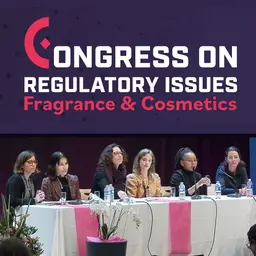
The DGCCRF once again draws consumers' attention to the use of lightening creams, products that can be dangerous, especially when they contain prohibited substances, such as hydroquinone, glucocorticoids or mercury compounds. As part of its control activities, the General Directorate for Competition, Consumer Affairs and Fraud Control declared 87 non-compliant and dangerous products in 2014, 29 in 2015 and 36 by early 2016.
The use of lightening creams is becoming more and more widespread. However, the DGCCRF reminds us that, without medical supervision, the use of these products can be risky and dangerous. The substances they contain penetrate the skin, modify its balance and weaken it.
Cosmetic products known as'lighteners
They act according to different modes of action with, as finality, the disappearance of pigment spots or the bleaching of the skin surface, by desquamation or by preventing the synthesis of melanin (responsible for pigmentation).
To obtain more powerful effects, some manufacturers tend to introduce into the formulation prohibited substances that are dangerous for humans (hydroquinone, mercury and its compounds), or to divert from their primary use active substances used in drugs (corticosteroids) and having as secondary effect the whitening of the skin. Unfortunately, the use of powerful products for voluntary depigmentation remains a widespread phenomenon, often driven by advertising or fashion effects. These practices make such cosmetic products de facto illegal and dangerous.
These products imported from third countries to the European Union are generally sold in shops specialising in so-called ethnic products, neighbourhood grocery stores, at fairs and markets or on the Internet. They come in the form of cream, lotion, oil or soap.
Voluntary depigmentation products
Voluntary depigmentation products containing banned substances, mainly used in Europe and France by women, pose significant health risks for women.
Indeed, in nearly 60% to 70% of cases, these practices cause harmful effects on the skin, generating conditions of varying severity ranging from mild burns to the appearance of eczema, acne, irreversible stretch marks, hyperpilosity or frequent cases of structural weakening of the skin causing difficulties in healing. For the most serious cases of prolonged application over time of products containing large quantities of dermocorticoids, cases of high blood pressure, diabetes or adrenal insufficiency have been identified.
These practices, widely publicised and denounced in particular by associations but also by health authorities, nevertheless persist among populations that are sometimes particularly young, and even among children.
Each year, new cases of serious adverse reactions linked to the use of these products are reported to the Agence nationale de sécurité du médicament et des produits de santé (ANSM), in charge of managing the cosmetovigilance system.
Control actions carried out by the DGCCRF services
For more than five years, the DGCCRF has been regularly monitoring these products in order to seize them, analyse them and have them withdrawn from the market when they prove to be illicit. Thus, 87 products were declared non-compliant and dangerous in 2014, 29 in 2015 and 36 on 1 April 2016 (figures not definitive for 2016). These products contained hydroquinone, glucocorticoids (clobetasol propionate, betamethasone dipropionate, fluocinonide), phenol, mercury, glycidol or salicylic acid.
|
Namely - Hydroquinone is the most common molecule in whitening products. Although advertised or suspected in soaps, it was never detected. Unlike desquamation products, it acts by prolonged contact (penetration time). She's classified as a carcinogen. - Clobetasol propionate is a corticosteroid that is prohibited for use in cosmetics, such as clobetasol. |
The DGCCRF once again draws consumers' attention to the use of these products with brand names that are often recurring, generally produced outside the European Union or without a country of origin and rarely traceable via a batch number. It recommends not purchasing products that contain any of the listed substances in their displayed composition. Finally, she reminds us that it is important to report any adverse reaction related to the use of such a product to the doctor treating you. This report may be accompanied by a complaint to the Departmental Directorate for the Protection of Populations (DDPP) territorially competent.
Finally, the DGCCRF points out that the importation and marketing of such products, which can be described as aggravated deception, smuggling of dangerous goods for humans, or even the placing on the market of medicines without authorisation can be very severely punished, with penalties of up to seven years' imprisonment and a fine of up to 750,000 euros.
The DGCCRF also publishes the list of non-conforming and dangerous skin lightening products identified in France, seized and withdrawn from the market between January 2015 and April 2016. The vast majority have been found in Paris, in the Paris region, but also in Rhône-Alpes, Seine Maritime, Hérault, Martinique and Guadeloupe.
To go further
- Consult
the list of dangerous products withdrawn from the market on the DGCCRF website
.













